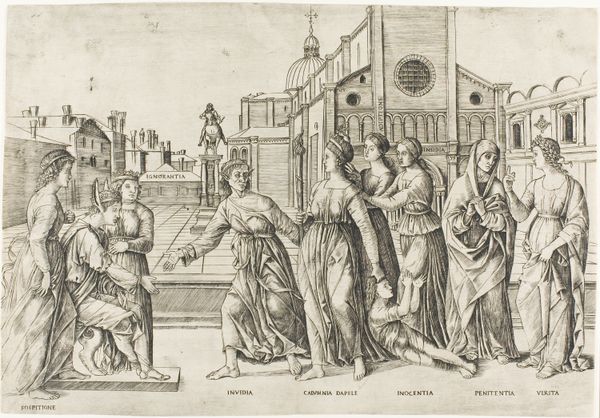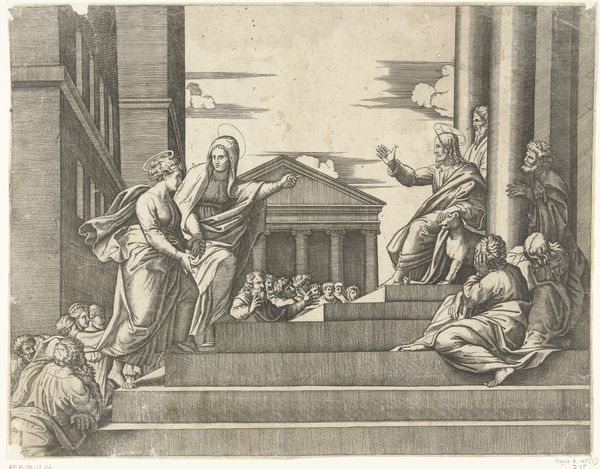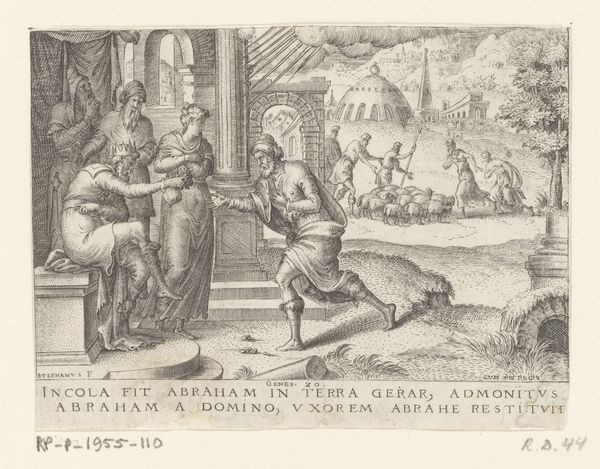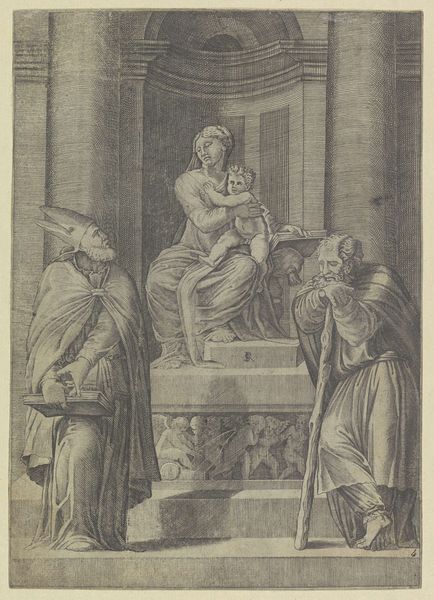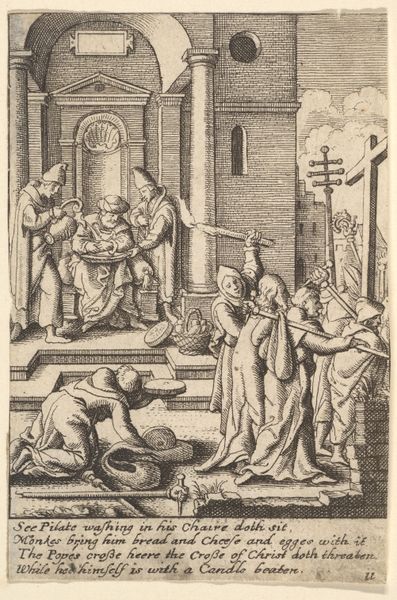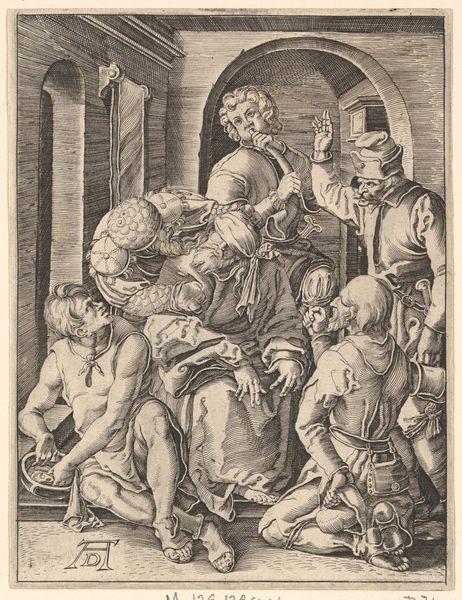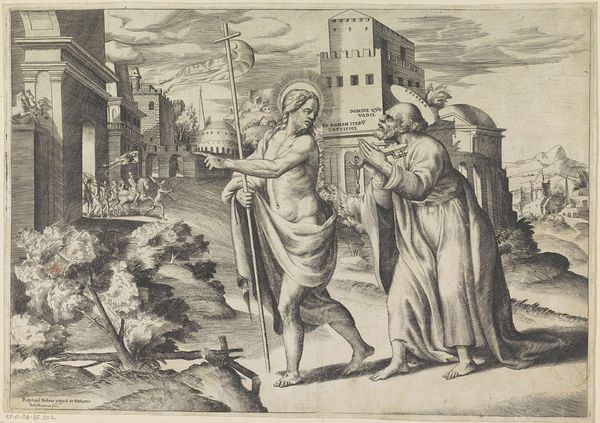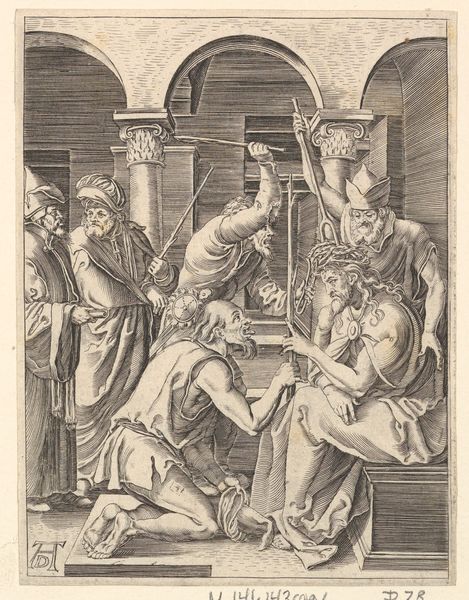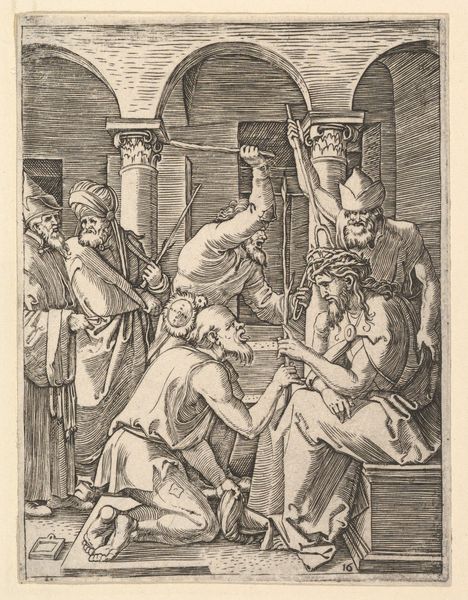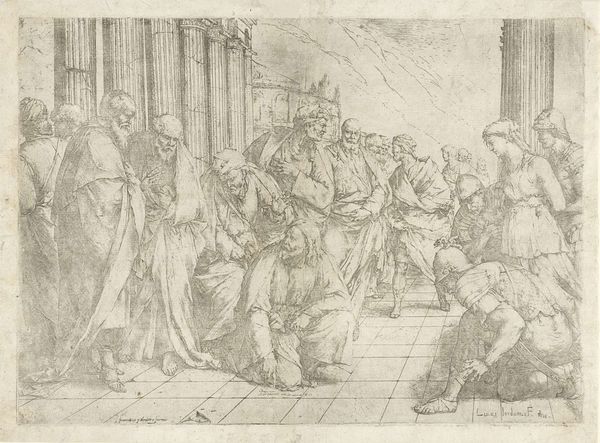
Berouw bij de inwoners van Ninive na het horen van de voorspellingen van Jona 1548 - 1552
0:00
0:00
dirckvolckertszcoornhert
Rijksmuseum
print, engraving
# print
#
pen sketch
#
figuration
#
11_renaissance
#
line
#
history-painting
#
northern-renaissance
#
engraving
Dimensions: width 178 mm, height 120 mm
Copyright: Rijks Museum: Open Domain
Curator: It's extraordinary, isn’t it? Dirck Volckertsz Coornhert captured this moment, between 1548 and 1552, using engraving. We're looking at "Repentance of the Inhabitants of Nineveh after Hearing Jonah's Predictions," currently held at the Rijksmuseum. The northern Renaissance rendered on the humblest scale! Editor: Immediate impression: abject misery! The composition throws you right into a scene of public mourning. Everyone is either crumpled in despair or recoiling from the central figure like he's radiating bad news, which, of course, he is. Curator: Jonah does cut quite the imposing figure, doesn’t he? Imagine being Coornhert, tasked with conveying the raw emotion of a city facing divine judgment. It's a history painting reduced to almost pure, frantic line work. You can feel the fear in the air! Editor: And it's the buildings looming in the background. They feel… doomed. Imposing but not permanent. As if even the stone is bracing itself. The institutional aspect here is impossible to miss; it emphasizes that society itself will come apart unless reforms take place. Curator: Reforms. Indeed. I’m fascinated by the faces, what we can see of them, buried in grief and contrition. It makes me wonder, are they afraid of the prophecy or simply reflecting on their sins? Are they afraid of losing something else? That part resonates deeply. The sheer scope of change can really bring on those questions. Editor: What’s interesting is the very public nature of it. I suppose there are social repercussions embedded here as much as spiritual anxieties. They were repenting and were doing it where other members of society were guaranteed to watch them in this act of remorse. Look at them down on their knees, praying! Very compelling for that reason. Curator: And how the very concept of collective action or agency transforms at a moment like that. To come together but so very individually, that feels inherently poignant in the work of an artist. Editor: Yes, exactly. The composition almost feels staged – look at that central positioning, which allows for maximal viewing exposure. Coornhert manages to suggest genuine vulnerability but doesn’t leave a sense of performance. I now have a renewed perspective of not just the biblical implications, but on human nature. Curator: Absolutely! The individual vs the social, made raw by the hand of one Northern Renaissance artist. And by reflecting on it now together, well, here we are in repentance too!
Comments
No comments
Be the first to comment and join the conversation on the ultimate creative platform.
